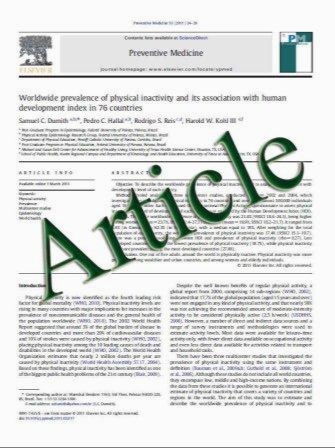Will early reconstruction prevent abnormal kinematics after ACL injury? Two-year follow-up using dynamic radiostereometry in 14 patients operated with hamstring autografts
- نوع فایل : کتاب
- زبان : انگلیسی
- مؤلف : Jonas Isberg • Eva Faxe´n • Gauti Laxdal • Bengt I. Eriksson • Johan Ka¨rrholm • Jon Karlsson
- چاپ و سال / کشور: 2011
Description
Purpose Previous studies have reported that Anterior Cruciate Ligament (ACL) reconstruction does not restore normal tibial rotation in patients with chronic instability and repeated episodes of giving way. We hypothesised that early ACL reconstruction, using quadruple hamstring autografts, before the pivoting episodes had occurred, would protect the knee joint from developing abnormal kinematics with increased external tibial rotation during flexion. Methods Fourteen consecutive patients (8 men, 6 women) with a median age of 24 years (18–43), with a complete, isolated unilateral ACL rupture and an intact contralateral knee, were studied. The operations were performed by one experienced surgeon, using quadruple hamstring autografts. We used dynamic radiostereometry (RSA) with tantalum markers inserted in both the injured and the intact contralateral knee to study the pattern of knee motion during active and weight-bearing knee extension. The patients were evaluated pre-operatively and followed for 2 years after the ACL reconstruction. The anterior-posterior laxity was measured using the KT-1000. Results Before surgical repair of the ACL, the internal/ external tibial rotation or abduction/adduction did not differ significantly between the injured and intact knees (P = 0.27–0.91). Separate studies of the anterior-posterior translation of the medial and lateral femoral flexion facet centres (MFC and LFC) relative to a fixed tibia did not reveal any significant differences between the injured and intact knees (P = 0.21–0.59). Pre-operatively, the KT- 1000 laxity measurements showed a side-to-side difference of 2.5 (1.0–5.5) mm. At 2 years, the laxity side-to-side difference was 0.5 (0–3.0) mm (P = 0.001), and there were still no significant differences between the injured and intact knees in terms of internal/external tibial rotation and abduction/adduction (P = 0.13–0.60). Nor did the anterior- posterior translation of the flexion facet centres differs (P = 0.27–0.97). Conclusion During the first 6–8 weeks after the ACL injury, before pivoting episodes had occurred, the kinematics of the injured knee were normal and did not differ from those of the intact contralateral knee. Reconstruction of the ACL within 10 weeks after injury using quadruple hamstring autografts resulted in unchanged knee kinematics for 2 years and no difference compared with the intact contralateral knee. Surgical repair during the early phase after the injury appears to protect the knee from developing abnormal knee motion after an ACL rupture. Level of evidence III.
Knee Surg Sports Traumatol Arthrosc DOI 10.1007/s00167-011-1399-y Received: 11 March 2009 / Accepted: 13 January 2011


